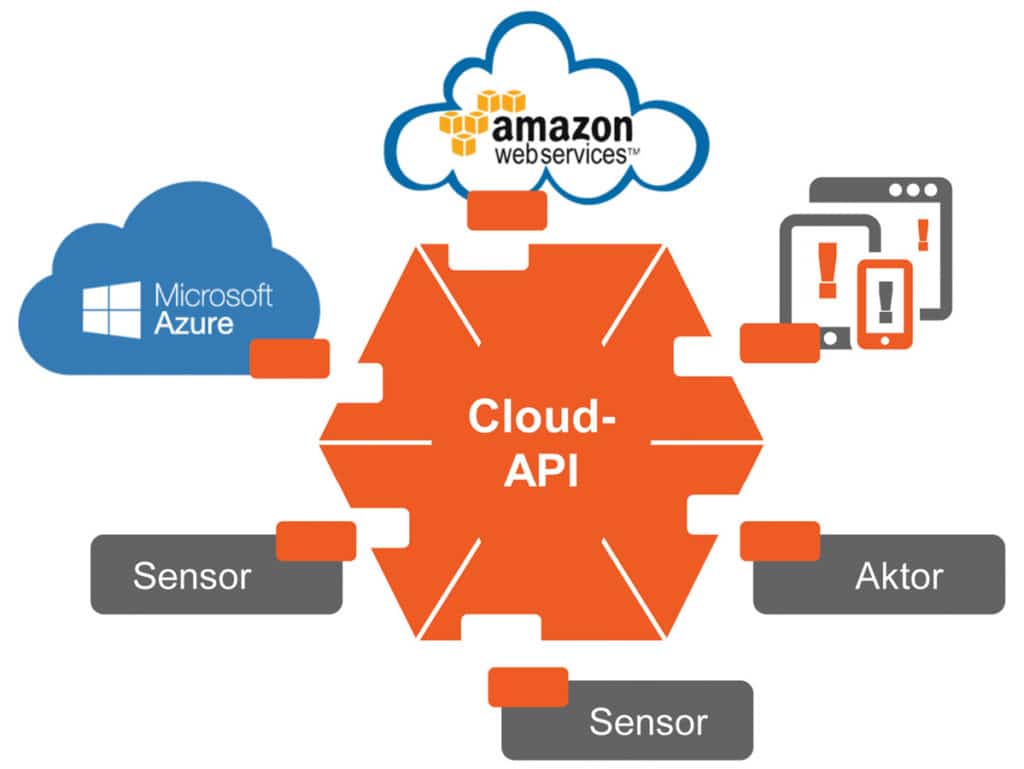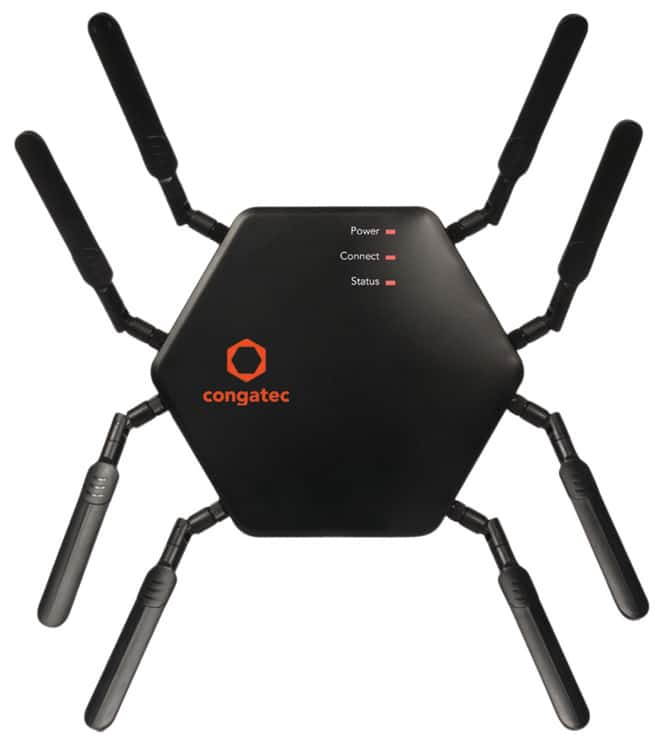In a perfect world, connecting devices, machines and systems to the cloud should be as simple as connecting USB devices or PCIe expansion cards to a PC. Make the connection, open the cloud application, recognise devices and configure. You’re now ready to make use of all your sensor data via a cloud connection, except that scenario is today nothing more than an application developer’s dream.
In reality, because sensor data being gathered at the field level has any number of characteristics—such as size, structure, protocol, interface and transmission path—it has been virtually impossible to realise a direct cloud connection to all those various smart sensors with only a few clicks. The absence of local logic, required to process heterogeneous data into meaningful information, is a roadblock to making sense of incredibly diverse sensor data.
Yet the appeal of the cloud’s promise to access Big Data and sophisticated analytics anytime, anywhere has application developers inspired to focus on local gateway technology to find a functional path toward the plug-and-play vision.
Today, more powerful, evolved gateways, which can function either as dedicated devices or as a virtual part of a system, play a new role in receiving, translating, processing and transmitting data as transparent information to the spectrum of cloud interfaces. This is enabled by the new cloud API for IoT gateways. It is essentially a middleware and glue logic solution to enable simple orchestration of wired and wireless sensor networks as well as embedded system configurations.
The cloud API provides application-ready software modules that act as blueprints for original equipment manufacturers (OEMs) to develop their own applications, removing complexity and creating a smart path to connect all types of sensor networks to any cloud platform.

Amplifying the importance of gateways
Gateways are complex devices with excellent transcoding and decision-making capabilities. Using integrated logic, these collect, analyse and transcode sensor data and then determine whether it goes to the field, the cloud or perhaps another gateway. Their secure end-to-end encryption further allows them to structure and move data consistently, for example, enabling bidirectional communication with a specific cloud solution.
Enabled with the new cloud API, the IoT gateway communicates locally with intelligent sensors, now capable of processing and converting the received sensor data. Embedded driver modules (EDMs) interface with hardware and third-party expansion cards, providing the glue logic that translates received data into the semantics of the application-specific IoT gateway logic.
This sensor engine, with EDM modules incorporated in its structure, is among the first software components to be standardised as a cloud function module. Its critical value is in moving data from local sensors to a generic middleware, independent of protocols.
Data is transmitted into the cloud via predefined interfaces and decision processes, at the same time normalising data measurements and checking that received data is meaningful. By using transparently defined modules and function blocks, identical logic interfaces can be used in each application.
The EDM for the standardised EAPI interface of computer-on-modules provides such an example of standardisation. This enables key performance information such as system temperatures and voltages, CPU utilisation or burglary detection to be easily transmitted in a standardised manner to any cloud by utilising the new Cloud API logic.
The middleware advantage
Historically, there have been no standardised cloud APIs for IoT gateways. This created a dead zone and gap in compatibility for sensor-to-cloud communication. It’s a challenge that has also driven an industry-wide desire to establish smart, efficient methods for receiving and processing data locally, and then forwarding it to the cloud.

To meet this need, cloud APIs must be not only application-ready but also standards-based, in order to deliver plug-and-play integration for the wide range of wired and wireless sensor connections.
With this advantage, even highly heterogeneous protocol configurations can be integrated with reasonable development resources, including wireless options such as Bluetooth LE, ZigBee, LoRa and other LPWANs, as well as wired protocols for building and industrial automation.
Cloud communications themselves face the same plug-and-play challenge, fueled by individual requirements for proprietary servers or third-party offers such as the Microsoft Azure, Telekom or Amazon AWS Cloud platforms.
Creating an ecosystem of standardised building blocks
To round out designs based on this type of hardware connection and abstraction, developers also need the flexibility of a standardised cloud interface. With standardisation of a cloud API for IoT gateways, the gateway’s cloud interface operates independently of the cloud provider, at least in terms of the design itself.

A new kind of communication engine developed in response to this need enables encrypted communication with servers or different clouds via smart wireless or wired connections. It’s a manufacturer-independent, open standard approach that ensures sensors, gateways and clouds can be readily deployed, irrespective of the data type, computing environment or end-use application.
For real development value, plug-and-play convenience must also extend to the configuration of IoT gateways. This is illustrated by the People-System-Things (PST) cloud framework—a device and data management system that seamlessly integrates with the cloud API for IoT gateways.
In addition, PST users can generate fully-featured web apps using only the framework’s drag-and-drop editing tool. No programming is required, and depending on devices available to the system, applications for mobile end users may even be created automatically.
Simplifying and accelerating cloud deployments
In the real world, an IoT appliance is characterised differently according to who is asked to define it. For example, hardware vendors focus primarily on functions of the embedded system itself, including the device and its embedded software.
IoT application service providers may have relatively little knowledge of hardware design, and focus their interests on user interfaces and experience, website design, databases, middleware and apps.
Lastly, system integrators or OEMs’ product owners focus on configuring, deploying, maintaining and supporting products that are flexible, customisable and cost-effective through standardisation.
To restrain the complexity represented by all these diverse priorities, standardised building blocks are becoming a new imperative in cloud system and application development. A strong standards-based ecosystem is critical to forward progress, with all major vendors of embedded computer technology, peripherals and clouds commiting to support these types of cloud APIs.
Each hardware device demands its dedicated sensor engine, and each cloud its corresponding cloud engine. The sensor engine quickly and easily reads, translates and processes IoT gateway data in the particular language of the cloud; users view processed information on a web application that is created automatically, with no need to program or develop processes for each sensor.
Ultimately, this dramatically minimises development efforts and resources required for connecting to the cloud.
With standardised function blocks, supply chains can be flexible and OEM migration strategies remain smart. Developers pick up tremendous speed in time-to-market by designing their IoT application only once, even as it remains portable to any combination of sensors, gateways and clouds.
When OEMs’ individual gateways support a standardised cloud API, only the cloud engine changes with new customer clouds. The rest of the solution can stay as it is, or only needs to be configured upon customers’ needs. It’s a new and more practical approach to cloud connectivity for any sensor or device in the industrial fields—for diverse interests across the embedded value chain.








